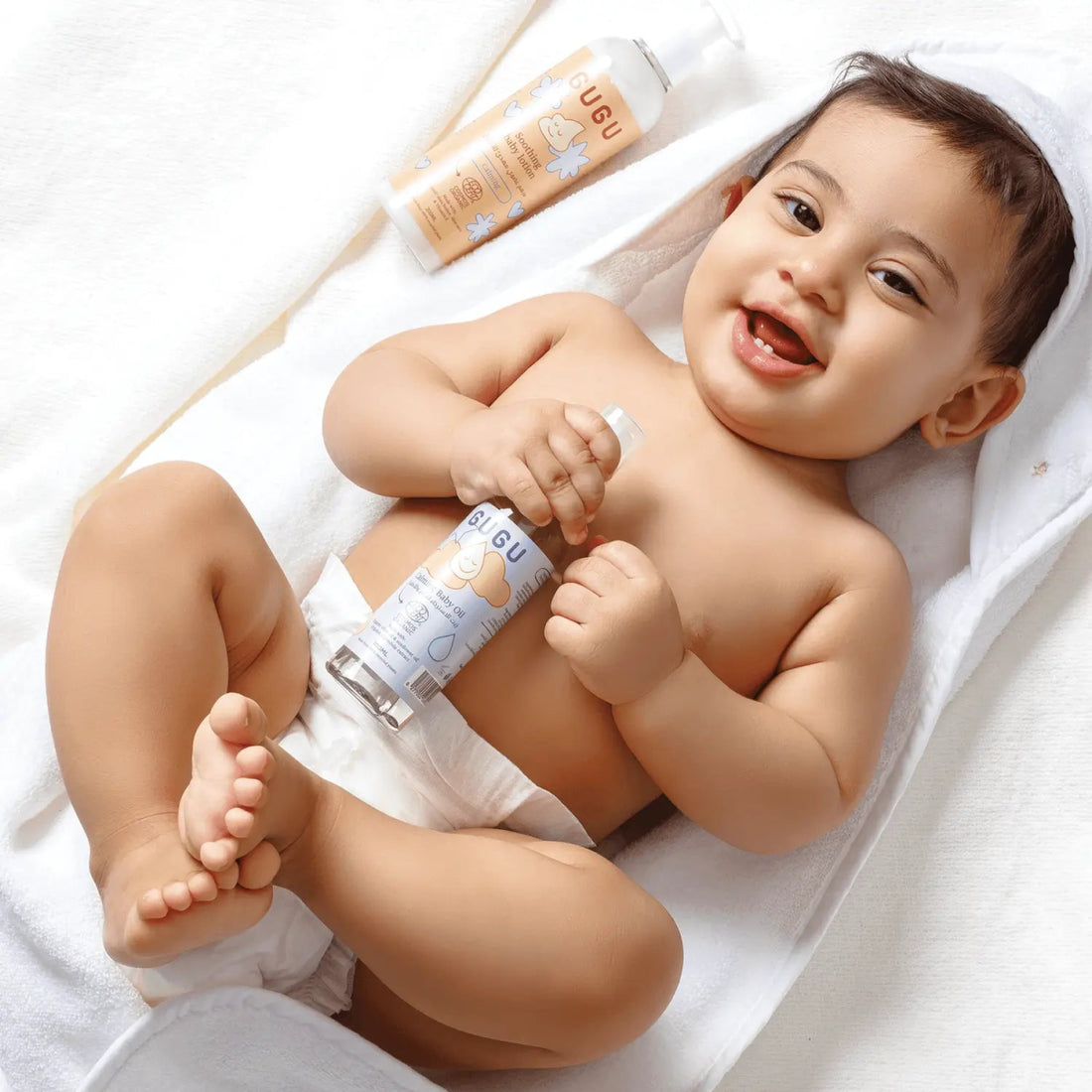Whether you have experience in parenting or recently became a parent, you may encounter diaper rashes in your newborn or (more than likely) in older babies as well, since dietary changes can cause more bowel movements or frequent urination. Diaper rash, also known as dermatitis, is an inflammation or irritation on the skin that results from prolonged exposure to moisture. There’s not much to worry about because diaper rash is highly preventable, but if it happens, it should be treated immediately as it can cause some serious infection. Read on to find out the signs, causes, and means of prevention.
What Are The Signs Of Diaper Rash?
Being able to detect the onset of diaper rash is vital to early treatment. Aside from paying close attention to your baby’s demeanor, you can also look for the following signs.
In the beginning stages of diaper rash, you might notice a pink or red tone on your child’s skin on the pelvic area, bums, and the backs of the thighs. Another symptom involves scaly skin from the diaper chafing, and in more severe cases, you’ll see blisters or open sores. In this situation, you’ll need to get your baby’s medical attention right away to avoid infection.
What Causes Diaper Rash?
Various factors contribute to your baby developing a diaper rash even when you change the diapers quite often. Some of these range from the fit of the diaper to changes in diet. The most common causes of diaper rash include:
Bacterial Or Yeast Infection
It comes from the warm and moist environment inside of a baby’s diaper where bacteria or yeast can thrive.
Irritation
whether the cause is chafing, a change in bowel movements, or a new brand of diaper, cream, or wipes, constant skin irritation ultimately leads to a rash.
Uses Of Antibiotics
Unfortunately, antibiotics kill the good bacteria along with the bad which results in a yeast infection or a worsening bacterial infection. Likewise, if you’re breastfeeding while taking antibiotics, you’ll need to watch for diaper rash. Plus, antibiotics, in general, cause diarrhea which leads to a rash.
Tight-Fitting Diaper
A tight-fitting diaper doesn’t allow the skin to breathe; opting for a diaper that fits comfortably while preventing leaks keeps rash away.
Allergic Reaction
A rash can be caused by your baby’s reaction to a new food that doesn’t agree with him or her or exposure to an ingredient in a product or materials from which the diaper is made.
How To Prevent Diaper Rash?
In addition to gaining familiarity with the symptoms and treatment for diaper rash in newborns or older babies, you can take several steps to prevent this condition from occurring or at least to treat it quickly.
Whatever the cause, if you notice your baby’s rash getting worse, or your baby develops a fever, then you’ll need to contact your pediatrician for further help. Often, diaper rash can be treated with a mild topical cream that protects your baby’s skin from irritation while the rash heals. Also, you might need to allow your baby’s skin to air dry after a diaper change and thorough cleaning.
Keep Baby’s Skin Clean & Dry
By using hypoallergenic wipes to clean your baby’s diaper area during a diaper change and giving regular baths (after about the first three weeks), you’ll decrease the chances of rash occurring.
Change Diapers Regularly
Waiting until urination or a bowel movement is not necessary; you can change a diaper after an hour or so since moisture from sweat or humidity can affect your child’s skin.
Use The Right Size Of Diaper
Finding a diaper that has a snug but not a tight fit proves to be more comfortable since your baby’s skin can still breathe, and the elastic won’t cut into the skin.
Use Natural Diapers
Opting for natural, particularly bamboo-based diapers lessens the chance of your baby having an allergic reaction that involves developing a rash since they are hypoallergenic, antimicrobial, and breathable.
Using A Gentle Dermatologically Tested Cream
Aapplying a hypoallergenic cream to your baby’s backside protects it from diaper irritation and excess moisture.
Let Your Baby’s Bottom Longer Without A Diaper
Also letting your baby bareskin for a few minutes without a diaper in between changes allows his or her skin to breathe and dry completely (after cleaning of course) which also staves off diaper rash.
Most importantly, consider keeping a log of foods that your baby has recently tried or may have been exposed to if you’re breastfeeding along with a list of brands of wipes, diapers, and detergents if you notice recurring symptoms of diaper rash. Chances are that you might need to switch the diet or anything topical that comes in contact with your baby’s skin.
Why Choose BumBum Diapers For Babies?
Better yet, you can opt for the diaper that possesses all the qualities of safe, comfortable materials that won’t irritate your baby’s delicate skin. BumBum produces diapers without dyes, chemicals, plastic, or any other synthetic material that would trigger an allergic reaction. Created from natural bamboo fiber, BumBum diapers provide a soft, comfortable fit and extra absorbency that draws moisture away from your baby’s skin. To know more about the benefites of bamboo diapers, click on the link. The long side panels and gentle elastic also prevent leaks. So, place your first order of Bumbum’s bamboo diapers today and allow us to protect your baby’s BumBum.





